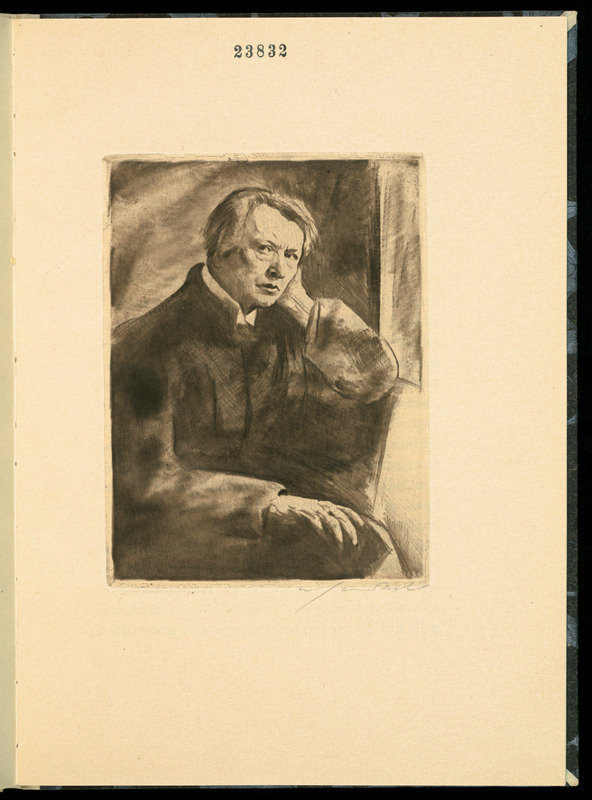Biographical/Historical Information
Ferruccio Busoni (1866-1924) was an Italian-German composer, piano virtuoso, and teacher. The son of an Italian father who played clarinet and a German mother woh played piano, Busoni studied music in Vienna and Leipzig. Starting in 1888, he obtained teaching positions in Helsinki, Moscow, and Boston, and he also toured the United States and Europe as a concert pianist from 1891-1894. From 1894 to 1914 (and again from 1920 until his death) he lived in Berlin. Busoni was known for his complex compositions for piano, including reinterpretations and arrangmenets of scores by Bach and Liszt, amongst others. During World War I, Busoni moved to Zurich, Switzerland, in order to live in a neutral location. He moved back to Berlin after the war, where he taught master classes in composition. His most famous pupil is Kurt Weill (who would later go on to write the Three Penny Opera). Busoni also composed four operas, though he was not able to complete an opera based on Doktor Faust before his death from kidney failure in 1924.
Willy Jaeckel (1888- 1944) was a German Expressionist painter and lithographer. Born in Breslau (then part of Germany, but now part of Poland), Jaeckel studied at the art school in his hometown from 1906 to 1908. He later enrolled at the Dresden Academy of Fine Arts. In 1913, Jaeckel moved to Berlin to work as an artist, becoming a member of the Berlin Secession in 1915. He was elected a member of the Prussian Academy of Arts and became a teacher at the University of the Arts in 1925. Jaeckel painted landscapes, nudes and still lifes, often with a religious style. His first successful painting was "Kampf" (Battle, or Struggle), a large canvas featuring a bellowing, muscular, naked man. In 1928, he was awarded the "Georg-Schlicht-Preis" for the "most beautiful portrait of a German woman." Jaeckel's work was also featured in the art competitions at the 1928 Summer Olympics in Amsterdam and the 1932 Summer Olympics in Los Angeles. He was named an Associate Professor in 1933, but he was dismissed when the Nazis came to power. His students protested, and he was eventually reinstated. This victory was short-lived, however. Those who took classes with him were likely not to graduate and, in 1937, some of his artworks were officially classified as "Degenerate." In response, Jaeckel painted "Plowman in the Evening" (1939), meant to depict the Nazi concept of Blood and Soil. Ironically, many of his works survived the war only because the Nazi government confiscated them from Berlin galleries and collections. Jaeckel lost his studio to a bombing raid in 1943, and he was killed during another raid early the following year. One of his major works, a four-part fresco mural at the Bahlsen bakery in Hanover dating from 1917, was destroyed later in 1944.
Reproductions and Permissions
We welcome fair use of this content. Please credit the Leo Baeck Institute in your citation. For usage policies and to request higher resolution images, see Reproductions and Permissions.
Citation
Jaeckel, Willy: Portrait of Ferruccio Busoni, Leo Baeck Institute, (q) PT 2647 A92 I_5 Online Portrait.
